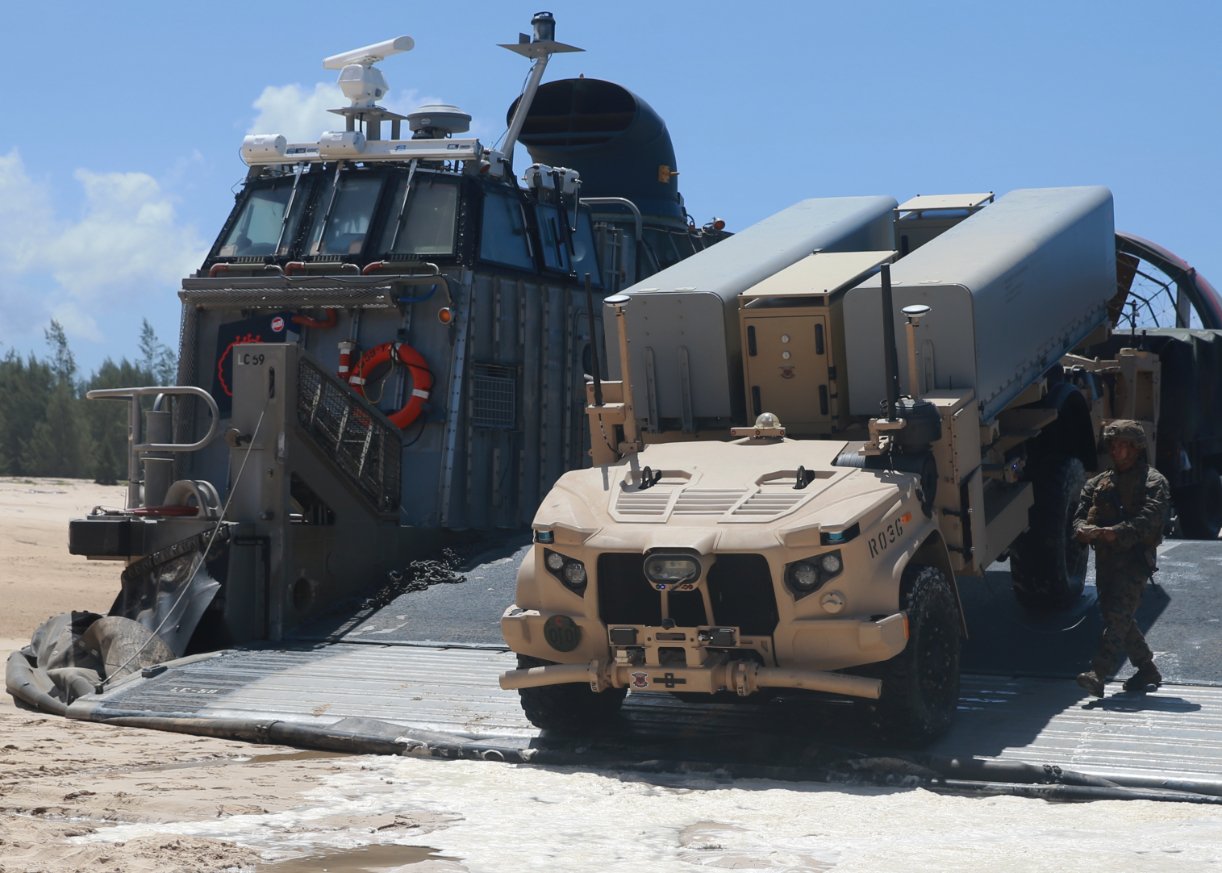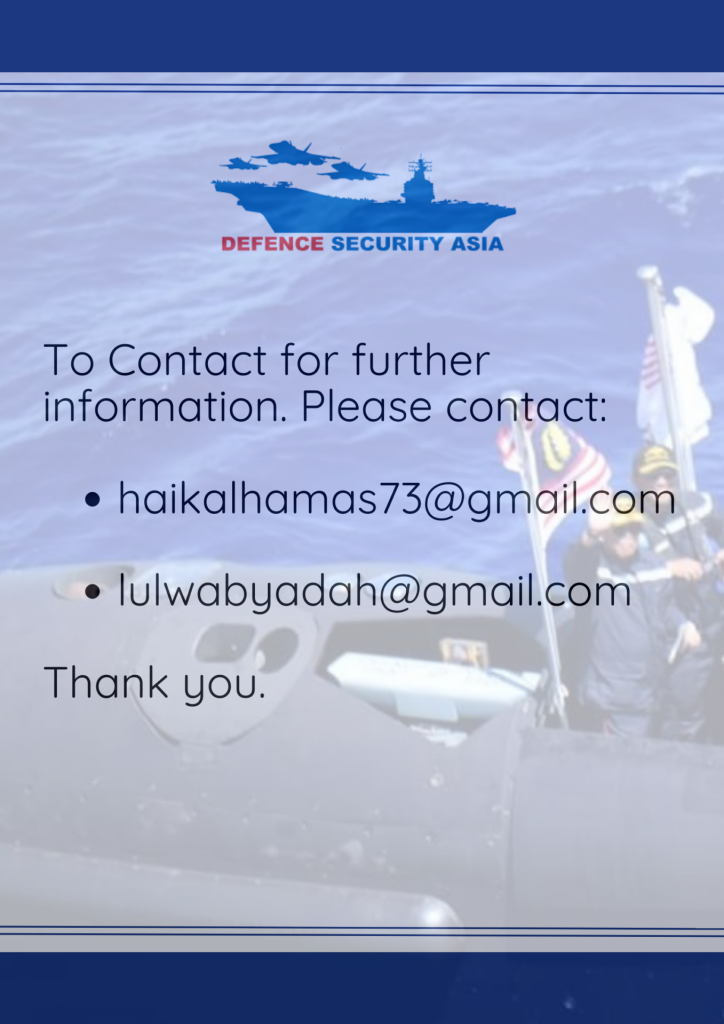After Unleashing Typhon, U.S. to Bolster Philippines with NMESIS Missile System in Strategic Power Move
This latest deployment forms part of a broader American strategy to forward-position high-lethality systems across the first island chain—a key geographical buffer against Chinese power projection in the western Pacific.
(DEFENCE SECURITY ASIA) — In a strategic show of force and alliance solidarity, the United States will deploy its cutting-edge Navy/Marine Expeditionary Ship Interdiction System (NMESIS) to the Philippines as part of the highly-anticipated Balikatan 2025 joint military exercise.
The announcement, made by the U.S. Department of Defense, comes at a time of mounting geopolitical friction in the Indo-Pacific, particularly in the contested South China Sea where Beijing’s maritime expansionism continues to fuel regional unease.
The deployment was finalised during U.S. Defense Secretary Pete Hegseth’s recent visit to Manila, underscoring Washington’s commitment to accelerating defence interoperability and combat readiness with its oldest treaty ally in Southeast Asia.
“As part of our agreement, the United States will deploy additional advanced capabilities to the Philippines, including the anti-ship NMESIS missile system and highly capable Unmanned Surface Vessels (USVs), during the upcoming Balikatan exercise this April,” Hegseth said.
“These systems will allow U.S. and Philippine forces to train jointly on high-end capabilities vital to defending the Philippines’ sovereignty,” he added.
The Balikatan exercise, whose name means “shoulder-to-shoulder” in Filipino, has evolved into one of the Indo-Pacific’s most complex bilateral military drills, focused not just on joint training but on deterring potential adversaries in a maritime flashpoint.
Hegseth also issued a stern rebuke of China’s increasingly provocative actions in the region, highlighting the growing concerns among U.S. allies about Beijing’s militarisation of artificial islands and assertive naval posturing.

The Philippines remains embroiled in a bitter territorial standoff with China over vast swathes of the South China Sea—waters that are not only rich in natural resources but also critical to global trade, with over $3 trillion worth of goods transiting annually.
China’s sweeping claim over nearly 90 percent of the waterway, demarcated by its controversial “nine-dash line,” has been rejected by an international tribunal but continues to be enforced through grey-zone tactics and maritime coercion.
Beijing has frequently accused Manila of acting as a proxy for U.S. strategic interests in the region, a narrative Manila flatly denies as it pursues greater defensive self-reliance in the face of mounting external threats.
Welcoming the U.S. missile deployment, Philippine Defense Secretary Gilberto Teodoro Jr. framed the move as a critical step in his country’s military modernisation drive and deterrence strategy.
“The introduction of the NMESIS missile system and unmanned surface vessels will fast-track the integration of cutting-edge technologies into the AFP, and prepare our forces to operate the advanced systems necessary for future deterrence,” Teodoro said.
This latest deployment forms part of a broader American strategy to forward-position high-lethality systems across the first island chain—a key geographical buffer against Chinese power projection in the western Pacific.

It follows last year’s landmark delivery of the U.S. Army’s Mid-Range Capability (MRC), also known as the Typhon missile system, to the Philippines, marking a significant expansion of American long-range strike assets in the region.
The Typhon system—capable of launching both SM-6 multi-role missiles and long-range Tomahawk cruise missiles—has rattled Beijing due to its ability to hit high-value targets deep inside mainland China from Philippine soil.
Colonel Michael Rose, commander of the U.S. Army’s Hawaii-based 3rd Multi-Domain Task Force (MDTF), confirmed this month that a second Typhon battery would soon be deployed somewhere in the Pacific theatre.
From positions in northern Luzon, the Tomahawk-equipped Typhon can potentially target Chinese airfields, naval bases, and radar installations on militarised reefs in the Spratlys and beyond—shifting the strategic balance in the South China Sea.
Each Typhon battery comprises four launchers, a mobile command centre, and logistics support vehicles, and is operated by the U.S. Army’s Strategic Fires Battalion, which also manages HIMARS and the Dark Eagle hypersonic missile system.
Together, these precision-strike assets form the backbone of America’s evolving “kill web” doctrine in the Indo-Pacific—linking sensors, shooters, and platforms across multiple domains to create a layered deterrence network.

Although NMESIS lacks the extended range of Typhon, its deployment introduces a formidable ship-killing capability that complicates Chinese naval operations near Philippine waters and chokepoints such as the Bashi Channel.
The NMESIS system, which fires the stealthy and sea-skimming Naval Strike Missile (NSM), is engineered to neutralise enemy surface combatants from standoff distances up to 185 kilometres.
Developed by Norway’s Kongsberg Defence & Aerospace and adopted by a growing number of U.S. allies, the NSM is designed to evade detection and interception through low-altitude flight, passive infrared guidance, and advanced terminal manoeuvres.
Its precision strike capability extends beyond maritime targets, enabling it to strike land-based installations, radar stations, and missile batteries—making it a flexible asset for anti-access/area-denial (A2/AD) missions.
NMESIS itself is mounted on unmanned ground vehicles and can be rapidly deployed in austere environments, reducing logistical footprints and enhancing survivability in forward-operating theatres.

The system’s automation also allows it to operate with minimal human intervention, making it ideal for high-threat scenarios where manned platforms may be vulnerable.
Countries such as Norway, Poland, Malaysia, and Australia have already integrated NSM or NMESIS into their naval or coastal defence forces, reflecting its growing strategic relevance in contested littoral regions.
With the Philippines now added to that list, Washington has sent a clear signal that its network of Indo-Pacific alliances is being fortified with lethal capabilities designed not only to deter aggression—but to dominate in the event of open conflict.
— DEFENCE SECURITY ASIA



Also we should get rid of all chinese product
BOYCOTT all!!!